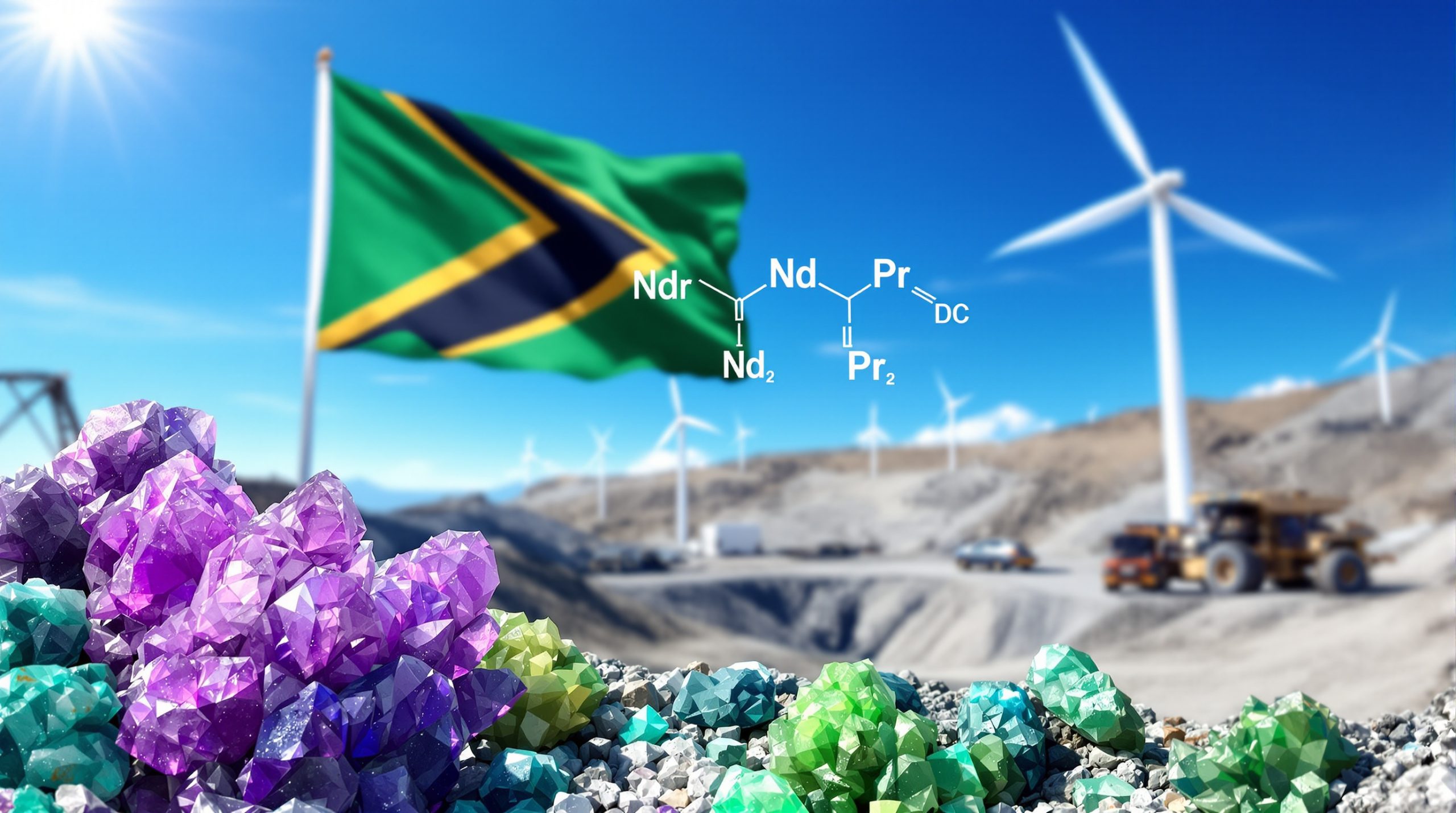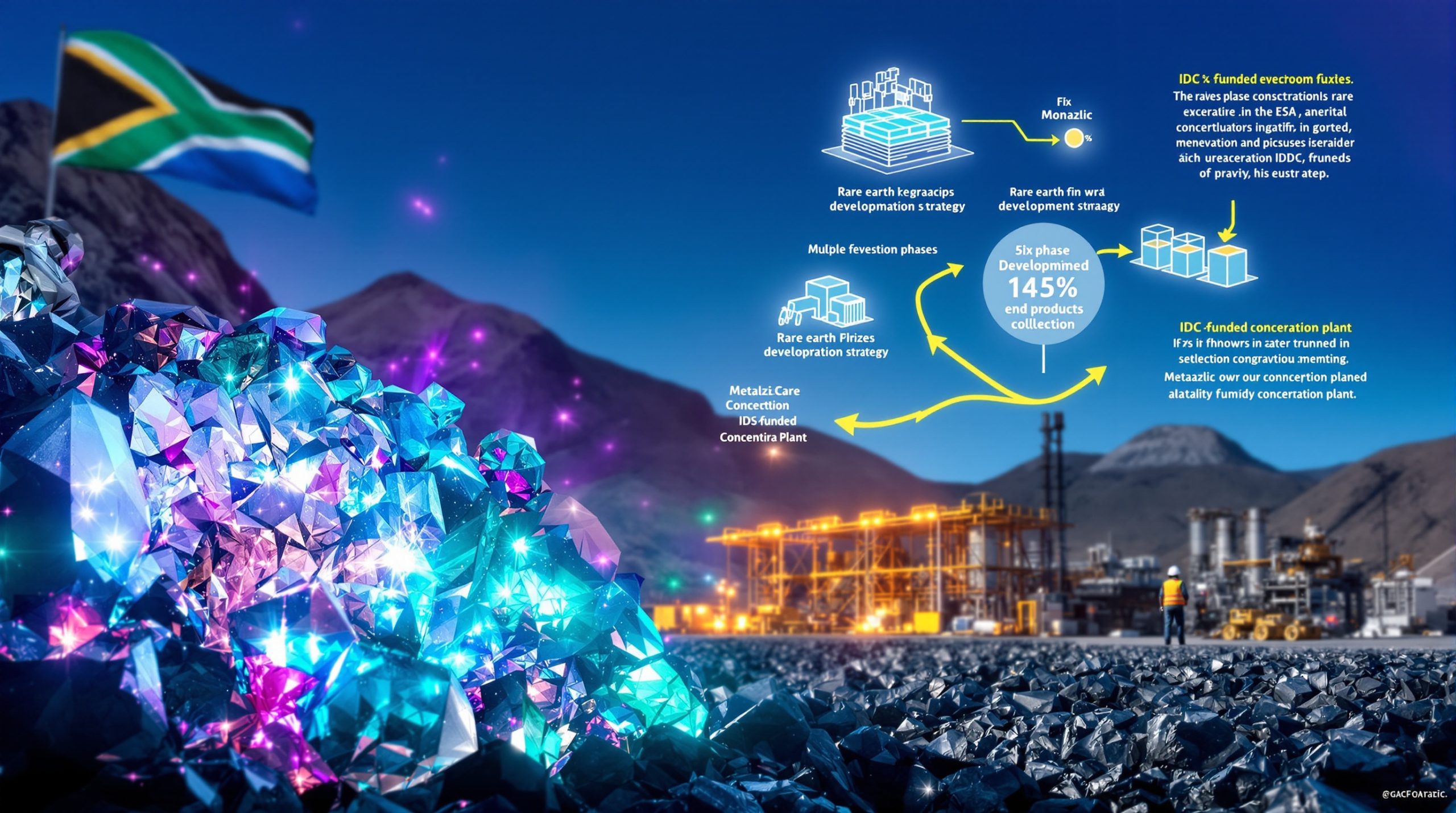Understanding Primary Silver Mines in the Global Market
Primary silver mines form the backbone of global silver supply, accounting for less than 30% of worldwide production yet representing the most dedicated operations in the industry. These mines generate the majority of their revenue from silver extraction, unlike operations where silver is merely a byproduct of gold, lead, zinc, or copper mining. The economic viability of these mines hinges on their high-grade silver deposits, which make focused silver extraction profitable as the main revenue source rather than as a secondary metal.
The Definition and Importance of Primary Silver Mines
Primary silver mines are officially defined as operations where silver contributes more than 50% of the total revenue. This classification distinguishes them from byproduct operations that extract silver alongside other metals. Despite their smaller contribution to overall global supply compared to byproduct sources, primary silver mines play a crucial role in stabilizing the market and setting production benchmarks.
The economic threshold for primary silver operations typically requires significantly higher grades than what might be acceptable at polymetallic mines. While a zinc-lead mine might profitably process ore with just 60-100 g/t silver as a credit, a primary silver operation generally requires several hundred grams per tonne to achieve economic viability when silver is the main product.
Geographic Distribution of Global Silver Production
Silver mining demonstrates a pronounced geographic concentration, with Latin America—particularly Mexico—dominating the global landscape. The region's geological endowment, coupled with centuries of mining history, has established it as the epicenter of primary silver production.
Mexico's Silver Dominance
Mexico stands as the undisputed leader in silver mining, producing approximately 23% of global silver output according to the U.S. Geological Survey. The country hosts 7 of the world's top 20 primary silver mines, with multiple operations located in the historic Fresnillo Silver Trend in Zacatecas state. This remarkable concentration of high-grade silver deposits has made Mexico the premier silver jurisdiction globally since the 16th century.
The Fresnillo company alone controls four of the ten largest primary silver mines worldwide, demonstrating the extraordinary concentration of production not just by country but by operator. This Mexican dominance stems from a combination of exceptional geology, established infrastructure, and generations of silver mining expertise.
Beyond Latin America
While Latin America forms the core of global silver production, significant operations exist across several continents:
- North America: The United States hosts three major primary silver mines in the top 20, including operations in Alaska, Idaho, and Nevada
- Asia: China's Ying Mining District represents one of the continent's largest primary silver producers
- Australia: The Cannington mine stands as one of the world's most significant silver-lead-zinc operations
- Africa: Morocco's Imiter mine serves as the continent's largest silver producer
- Russia: The Dukat mine in Russia's Far East represents one of the world's largest silver deposits
This geographic diversity ensures that silver supply isn't entirely dependent on any single region, though Latin American production remains pivotal to global market stability.
The World's 20 Largest Primary Silver Operations
The global hierarchy of primary silver mines reveals a diverse array of operations spanning multiple continents, mining techniques, and geological settings. These mines collectively establish the foundation of dedicated silver production worldwide.
The Lower Tier: Mines 20-16
20. San Bartolome Mine (Bolivia)
Located near the historic mining city of Potosí, Bolivia, San Bartolome produces approximately 4 million ounces annually. What makes this operation distinctive is its unconventional approach—rather than mining fresh ore, it processes silver-rich gravel deposits (pallacos) left behind from centuries of earlier mining activities. Andean Precious Metals has developed specialized processing techniques to extract silver from these historical mining remnants, effectively recycling waste material from Bolivia's colonial mining era.
The operation employs heap leaching technology to process lower-grade material economically. Its environmental footprint is smaller than traditional mining as it reprocesses existing material rather than developing new areas.
19. Guanacevi Mine (Mexico)
Endeavour Silver's Guanacevi operation in Durango, Mexico, yields around 4 million ounces annually. This underground mine has consistently delivered despite facing significant water management challenges in its deeper sections. The operation recently extended its productive life through the discovery of new high-grade zones in the Milache and Santa Cruz Sur areas.
Guanacevi employs conventional cut-and-fill mining methods adapted for narrow-vein deposits, with ore processed through a 1,200 tonne-per-day facility using cyanide leaching and Merrill-Crowe precipitation to recover the silver.
18. Minera Frisco Operations (Mexico)
Minera Frisco's consolidated silver operations contribute approximately 4.3 million ounces to global supply annually. The company operates several mines throughout Mexico, including San Francisco del Oro, Asientos, and Tayahua. These operations typically feature polymetallic deposits where silver extraction receives priority in processing decisions.
Minera Frisco employs a mix of open-pit and underground mining techniques depending on the deposit characteristics. Their processing facilities utilize conventional flotation circuits to produce silver-rich concentrates.
17. Rochester Mine (United States)
Coeur Mining's Rochester operation in Nevada yields about 4.4 million ounces of silver per year. As one of America's largest primary silver producers, Rochester operates as an open-pit, heap leach operation situated on a massive silver-gold deposit. The mine has been operating since the 1980s, with recent capital investments aimed at increasing production capacity through the POA 11 expansion project.
The expansion represents a $600 million investment designed to extend mine life through 2033 while increasing production and reducing costs. Rochester processes lower-grade ore (typically under 1 oz/ton silver) through large-scale, cost-effective heap leaching.
16. Imiter Mine (Morocco)
The Imiter mine, Africa's largest silver operation, produces approximately 4.4 million ounces annually. Operated by Managem Group, this historic mine stands out for containing silver in its native elemental form rather than in more common sulfide minerals. Located in Morocco's Anti-Atlas Mountains, Imiter has ancient origins, with evidence of silver extraction dating back to the 8th century.
The mine exploits a system of high-grade epithermal veins using cut-and-fill mining methods. Its metallurgical processing is somewhat simpler than other operations due to the presence of native silver, employing direct cyanide leaching rather than complex flotation circuits.
The Middle Tier: Mines 15-11
15. La Colorada Mine (Mexico)
Pan American Silver's La Colorada operation in Zacatecas, Mexico, yields about 4.9 million ounces yearly. This underground mine features exceptionally high-grade silver veins averaging over 400 g/t silver. La Colorada has undergone significant modernization and expansion in recent years, including shaft deepening and ventilation improvements to access deeper, higher-grade zones.
The operation employs longhole stoping and cut-and-fill mining methods depending on the geometry of the ore bodies. Its processing facilities include both flotation and leaching circuits to maximize recovery from different ore types.
14. Lucky Friday Mine (United States)
Hecla Mining's Lucky Friday operation in Idaho produces approximately 4.9 million ounces annually. This deep underground mine has operated for over 75 years and reaches depths exceeding 9,000 feet, making it one of North America's deepest mines. Recent technological innovations, including remote mining equipment and improved ground support systems, have enhanced safety and productivity in this challenging environment.
Lucky Friday employs underhand cut-and-fill mining with cemented tailings backfill to provide stability at extreme depths. The operation recently completed the #4 Shaft project, providing access to higher-grade material at depth and extending mine life by decades.
13. Las Chispas Mine (Mexico)
SilverCrest Metals' Las Chispas operation in Sonora, Mexico, produces about 5.7 million ounces annually. As one of the newer entries among top producers, this high-grade underground mine began commercial production in 2022. The operation features exceptionally rich silver-gold veins with bonanza-grade zones exceeding 1,000 g/t silver equivalent.
Las Chispas employs a combination of longhole stoping and cut-and-fill mining methods depending on vein width and geometry. Its processing facility incorporates conventional cyanide leaching and Merrill-Crowe precipitation to achieve high recovery rates from the high-grade ore.
12. Ying Mining District (China)
Silvercorp Metals' operations in the Ying Mining District generate approximately 5.9 million ounces yearly. Located in Henan Province, China, these underground mines feature multiple high-grade silver-lead-zinc veins with average silver grades exceeding 300 g/t in many areas. The operation employs innovative mining techniques and has consistently maintained low production costs relative to industry peers.
The Ying operations include several mines (SGX, HPG, TLP, LME, and LMW) that feed centralized processing facilities. The mines employ shrinkage stoping and resuing techniques adapted for the narrow but high-grade veins characteristic of the district.
11. Palmarejo Complex (Mexico)
Coeur Mining's Palmarejo operation in Chihuahua, Mexico, yields about 6.8 million ounces annually. This underground mining complex features both silver-gold veins and broader mineralized zones. The operation has evolved from initial open-pit mining to underground methods targeting higher-grade material, with several distinct deposits (Guadalupe, Independencia, and La Nación) contributing to production.
Palmarejo employs longhole stoping with cemented rockfill in wider zones and cut-and-fill methods in narrower veins. Its processing facility uses conventional cyanide leaching and Merrill-Crowe precipitation, achieving silver recoveries around 90%.
The Top 10 Primary Silver Producers Worldwide
The elite tier of primary silver producers represents the crown jewels of the industry—operations with exceptional grade, scale, or both that enable production exceeding 8 million ounces annually.
10. Greens Creek Mine (United States)
Hecla Mining's Greens Creek operation in Alaska produces approximately 8.5 million ounces annually. This underground mine operates on Admiralty Island in an environmentally sensitive area, employing cutting-edge sustainability practices to minimize its footprint. The mine features polymetallic ore with exceptionally high silver grades averaging over 400 g/t alongside significant zinc, gold, and lead credits.
Greens Creek employs drift-and-fill and bench-and-fill mining methods adapted to the complex geometry of its massive sulfide ore bodies. Its processing facility includes dense media separation to pre-concentrate ore, followed by flotation circuits that produce separate lead, zinc, and bulk concentrates.
9. Cerro Los Gatos Mine (Mexico)
The Los Gatos operation in Chihuahua, Mexico, produces about 9.7 million ounces yearly. Majority-owned by First Majestic Silver, this relatively new underground mine began commercial production in 2019. The operation features high-grade silver-zinc-lead mineralization and employs modern mining techniques to maximize recovery from complex polymetallic ore.
Los Gatos utilizes longhole stoping with cemented paste backfill to maximize extraction while maintaining ground stability. Its processing facility incorporates state-of-the-art flotation technology to produce separate lead-silver and zinc concentrates.
8. Fresnillo Mine (Mexico)
The namesake operation of Fresnillo plc produces approximately 10.2 million ounces annually. Located in Zacatecas, Mexico, this historic mine has operated continuously since 1554, making it one of the world's oldest and most enduring silver operations. Despite centuries of production, ongoing exploration continues to replenish reserves through the discovery of new mineralized zones.
Fresnillo employs cut-and-fill and longhole stoping methods depending on ore body characteristics. Its processing facility uses conventional flotation to produce lead-silver and zinc concentrates, with silver recoveries typically exceeding 90%.
7. Uchucchacua Mine (Peru)
Buenaventura's Uchucchacua operation in Peru yields about 10.5 million ounces yearly. Located in the central Andes at elevations exceeding 4,500 meters above sea level, this underground mine features complex silver-manganese-lead-zinc mineralization requiring sophisticated metallurgical processing. The operation has undergone significant modernization to address mineralogical challenges, particularly the presence of manganese minerals that complicate silver recovery.
Uchucchacua employs cut-and-fill mining methods adapted to the irregular geometry of its ore bodies. Its processing facility includes specialized circuits to manage the manganese content while maximizing silver recovery.
6. Puna Operations (Argentina)
SSR Mining's Puna operation in Argentina produces approximately 10.5 million ounces annually. This operation combines the Chinchillas open-pit mine with the Pirquitas processing facility, creating an integrated mining complex with significant economies of scale. The Chinchillas deposit features silver-lead-zinc mineralization with good metallurgical characteristics.
Puna employs conventional open-pit mining at Chinchillas, with ore transported approximately 40 kilometers to the processing facility at Pirquitas. The processing circuit uses conventional flotation to produce silver-lead and zinc concentrates.
5. Cannington Mine (Australia)
South32's Cannington operation in Queensland produces about 11.8 million ounces yearly. As Australia's largest silver producer, this underground mine also yields significant lead and zinc. Originally developed by BHP in the 1990s, Cannington employs advanced automation and remote operations technology to maximize productivity in challenging ground conditions.
The mine uses sublevel open stoping with cemented paste backfill to extract ore from its massive sulfide deposit. Its processing facility includes heavy media separation as a pre-concentration step, followed by conventional flotation to produce separate lead-silver and zinc concentrates.
4. San Julian Mine (Mexico)
Fresnillo plc's San Julian complex produces approximately 11.8 million ounces annually. Located in the Chihuahua-Durango border region of Mexico, this operation combines open-pit and underground mining methods targeting different mineralized zones. The complex processes two distinct ore types through separate circuits optimized for different mineralization styles—a disseminated ore body mined by open pit and high-grade veins accessed underground.
San Julian employs longhole stoping underground and conventional open-pit methods for surface extraction. Its processing facilities include both leaching (for gold-silver ore) and flotation circuits (for polymetallic ore).
The Three Global Leaders in Primary Silver Production
The top three primary silver mines worldwide represent the pinnacle of the industry, each producing more than 14 million ounces annually through exceptional grade, scale, or operational efficiency.
3. Dukat Mine (Russia)
Located in Russia's Far East Magadan region, the Dukat mine produces approximately 14.6 million ounces annually. This operation exploits one of the world's largest silver deposits, discovered in the 1960s and developed into a major mining complex. The epithermal silver-gold deposit features multiple ore zones processed through a central facility.
Dukat employs both open-pit and underground mining methods depending on the depth and characteristics of different ore zones. Its processing facilities use conventional flotation followed by intensive cyanidation of flotation concentrates to maximize silver recovery from complex mineralogy.
2. Saucito Mine (Mexico)
Fresnillo plc's Saucito operation in Zacatecas, Mexico, yields about 15.5 million ounces yearly. This underground mine, located near the historic Fresnillo mine, began commercial production in 2011 and quickly established itself as one of the world's premier silver operations. The mine features exceptionally high-grade silver veins with gold, lead, and zinc credits that enhance overall economics.
Saucito employs cut-and-fill and longhole stoping methods, with increasing mechanization to improve productivity. Its processing facility uses conventional flotation to produce lead-silver and zinc concentrates with high precious metals content.
1. Juanicipio Mine (Mexico)
The world's largest primary silver producer, Juanicipio generates approximately 18.6 million ounces annually. Located in Mexico's Zacatecas state, this joint venture between Fresnillo plc (56%) and MAG Silver (44%) began commercial production in 2023 after years of development. The underground operation features exceptionally high-grade silver-gold-lead-zinc mineralization within the prolific Fresnillo Silver Trend.
Juanicipio employs mechanized cut-and-fill and longhole stoping methods to extract ore from multiple veins. Its state-of-the-art processing facility achieves high recoveries from complex polymetallic ore through advanced flotation technology, producing separate lead, zinc, and pyrite concentrates with high precious metals content.
Comparative Analysis of Global Primary Silver Production
The hierarchy of primary silver mines reveals significant production concentration, with the top five operations accounting for nearly 30% of primary silver output. This concentration becomes even more pronounced when examining ownership patterns.
Production Concentration by Company
Fresnillo plc stands as the dominant force in primary silver mining, controlling four of the world's ten largest operations—Juanicipio, Saucito, Fresnillo, and San Julian. Together, these four mines produce approximately 56 million ounces annually, representing a remarkable concentration of productive capacity under a single corporate umbrella.
This concentration extends beyond Fresnillo, with just five companies (Fresnillo, South32, SSR Mining, Buenaventura, and Hecla Mining) controlling over 60% of production from the top 20 primary silver mines globally.
Comparative Production Table
| Rank | Mine | Country | Ownership | Annual Production (Moz) |
|---|---|---|---|---|
| 1 | Juanicipio | Mexico | Fresnillo (56%) / MAG Silver (44%) | 18.6 |
| 2 | Saucito | Mexico | Fresnillo (100%) | 15.5 |
| 3 | Dukat | Russia | Mangazeya Mining | 14.6 |
| 4 | San Julian | Mexico | Fresnillo (100%) | 11.8 |
| 5 | Cannington | Australia | South32 (100%) | 11.8 |
| 6 | Puna | Argentina | SSR Mining (100%) | 10.5 |
| 7 | Uchucchacua | Peru | Buenaventura (100%) | 10.5 |
| 8 | Fresnillo | Mexico | Fresnillo (100%) | 10.2 |
| 9 | Cerro Los Gatos | Mexico | First Majestic (70%) | 9.7 |
| 10 | Greens Creek | United States | Hecla Mining (100%) | 8.5 |
| 11 | Palmarejo | Mexico | Coeur Mining (100%) | 6.8 |
| 12 | Ying | China | Silvercorp Metals (77.5%) | 5.9 |
| 13 | Las Chispas | Mexico | SilverCrest Metals (100%) | 5.7 |
| 14 | Lucky Friday | United States | Hecla Mining (100%) | 4.9 |
| 15 | La Colorada | Mexico | Pan American Silver (100%) | 4.9 |
| 16 | Imiter | Morocco | Managem (80.26%) | 4.4 |
| 17 | Rochester | United States | Coeur Mining (100%) | 4.4 |
| 18 | Minera Frisco | Mexico | Minera Frisco (100%) | 4.3 |
| 19 | Guanacevi | Mexico | Endeavour Silver (100%) | 4.0 |
| 20 | San Bartolome | Bolivia | Andean Precious Metals (100%) | 4.0 |
This production data illustrates the dominance of Mexican operations, with the country hosting 7 of the top 20 primary silver mines globally. The concentration of top-tier production in Latin America underscores the region's exceptional geological endowment and mining heritage.
Economic Factors Influencing Primary Silver Mining
Primary silver mines face unique economic challenges compared to operations where silver is a byproduct. The specialized nature of these mines creates distinct operational and financial characteristics that influence their development and sustainability.
Operational Challenges and Economic Considerations
Primary silver operations contend with several key factors affecting their profitability:
Grade Variability and Geological Complexity
Silver deposits typically demonstrate greater grade variability than base metal operations, creating challenges for consistent production planning. This variability manifests in several ways:
- Vein narrowing and pinching: Many primary silver deposits occur in epithermal vein systems that can dramatically change in width over short distances
- Bonanza zones: Extremely high-grade pockets can be interspersed with lower-grade material, creating challenges for resource estimation
- Complex mineralogy: Silver often occurs in multiple mineral forms within the same deposit, complicating processing and recovery
- Structural controls: Faulting and post-mineralization displacement can offset veins, requiring sophisticated geological modeling
These geological complexities necessitate more intensive drilling, sampling, and geological interpretation than many base metal deposits.
Processing Complexity and Metallurgical Challenges
Many silver ores contain minerals requiring specialized metallurgical treatment to achieve acceptable recovery rates:
- Sulfide/oxide transitions: Many silver deposits contain both oxidized and sulfide mineralization requiring different processing approaches
- Refractory components: Minerals like argentojarosite, pyrargyrite, and tetrahedrite can resist conventional cyanide leaching
- Cyanide-consuming elements: Copper, zinc, and manganese minerals often accompany silver, increasing processing costs
- Fine-grained distribution: Silver minerals frequently occur as microscopic inclusions requiring fine grinding for liberation
These metallurgical challenges often necessitate complex multi-stage processing circuits that increase capital and operating costs compared to simpler operations.
Depth Considerations and Mining Costs
Many high-grade silver veins extend to significant depths, increasing mining costs:
- Ventilation requirements: Deep mines require extensive ventilation infrastructure to manage heat and air quality
- Ground support needs: Increasing rock stress at depth necessitates more intensive ground support systems
- Dewatering costs: Many silver mines encounter significant groundwater, requiring substantial pumping infrastructure
- Hoisting distance: Deep mines face increased material transport costs to move ore to surface
These depth-related factors contribute to the higher overall mining costs characteristic of many primary silver operations.
Price Volatility and Financial Planning
Silver prices historically demonstrate greater percentage volatility than gold, creating planning challenges:
- Industrial/investment demand balance: Silver's dual role as both industrial metal and investment vehicle creates complex price dynamics
- Gold ratio relationship: Silver prices often move in correlation with gold but with greater amplitude
- Production cost proximity: Many primary silver mines operate with margins that can be quickly eroded by price decreases
- Development timing risks: The lengthy permitting and construction timeline for new mines creates significant price exposure
This price volatility necessitates conservative financial planning and often leads companies to implement hedging strategies to protect cash flow.
By-product Credits and Economic Enhancement
Even primary silver mines often rely on base metal or gold credits to enhance economics:
- Lead and zinc contributions: Many silver deposits contain significant lead and zinc that can contribute 20-40% of revenue
- Gold credits: Precious metals often occur together, with gold providing important value enhancement
- Copper presence: Some silver deposits contain copper minerals that improve overall economics
- Metal price correlation: Fortunately, many of these metals tend to follow similar price cycles, providing natural hedging
These byproduct credits often make the difference between marginal and robust economics for primary silver operations.
Future Outlook for Primary Silver Mining
The primary silver mining landscape continues to evolve, shaped by technological advancement, market dynamics, and changing operational approaches. Several key trends will likely influence the sector's development in coming years.
Emerging Trends and Industry Developments
Technological Innovation and Operational Efficiency
The industry is increasingly embracing advanced technology to improve productivity and reduce costs:
- Automation implementation: Leading producers are deploying automated loading, hauling, and drilling equipment to enhance safety and efficiency
- Remote operations capability: Mines like Cannington have established remote operations centers allowing skilled personnel to control multiple pieces of equipment from a central location
- AI-driven optimization: Advanced algorithms are being applied to process control, geological modeling, and maintenance scheduling
- Battery electric vehicles: Several operations are transitioning to battery electric underground equipment to reduce ventilation requirements and improve working conditions
- Digital twinning: Creating comprehensive digital replicas of mine operations enables sophisticated scenario planning and optimization
These technological advances have particular relevance for primary silver operations, which often contend with higher operating costs than base metal mines.
Depth Extensions and Resource Development
Major producers are increasingly investing in deeper mine development to access high-grade zones:
- Shaft deepening projects: Operations like Lucky Friday have extended their vertical development to access deeper resources
- Ventilation upgrades: Enhanced cooling and ventilation systems are enabling mining at greater depths and in higher temperature environments
- Advanced ground support: New support systems including dynamic bolting, injectable resins, and engineered backfill enable safe mining at extreme depths
- Exploration from underground: Deep drilling programs from established infrastructure allow cost-effective testing of depth extensions
- 3D seismic applications: Advanced geophysical techniques are improving the targeting of deep mineralization
These investments in accessing deeper resources represent a critical strategy for extending mine life at established operations.
Industry Consolidation and Corporate Strategy
The silver mining sector has experienced significant industry consolidation trends:
- Major-junior partnerships: Established producers increasingly partner with junior companies to access new discoveries
- Integration benefits: Combining nearby operations can create significant synergies in processing and infrastructure
- Portfolio optimization: Companies are rationalizing assets to focus on higher-margin, longer-life operations
- Geographic focus: Many producers are concentrating activities in mining-friendly jurisdictions with established infrastructure
- Vertical integration: Some silver producers are developing refining capacity to capture additional value from production
This consolidation trend appears likely to continue as companies seek to achieve scale economies and improve capital efficiency.
Exploration Renaissance and Discovery Potential
Rising silver prices have stimulated increased exploration for new primary deposits:
- Brownfield focus: Companies are intensifying exploration around existing mines where infrastructure advantages improve economics
- New technology application: Advanced geophysical methods are enabling detection of concealed deposits
- District consolidation: Fragmented land positions in historic districts are being unified, enabling systematic exploration
- Deeper targeting: Modern drilling technology allows testing targets at depths previously considered impractical
- Data reinterpretation: Application of machine learning to historic data is generating new exploration concepts
These exploration initiatives may gradually introduce new deposits into the production pipeline, though development timelines typically span 5-10 years from discovery to production.
ESG Focus and Sustainability Imperative
Environmental, social, and governance considerations are increasingly shaping operational approaches:
- Water management innovation: Operations in water-stressed regions are implementing advanced recycling and conservation measures
- Energy transition: Many mines are incorporating renewable energy to reduce carbon footprint and operating costs
- Community development: Companies are establishing more sophisticated community engagement programs to maintain social license
- Biodiversity protection: Operations adjacent to sensitive ecosystems are implementing comprehensive biodiversity management plans
- Transparent reporting: Enhanced disclosure of environmental and social performance is becoming standard practice
These ESG initiatives represent both a compliance requirement and a competitive advantage in securing financing and maintaining operating permits.
Frequently Asked Questions About Primary Silver Mines
What percentage of global silver comes from primary silver mines?
Primary silver mines contribute approximately 27-30% of global silver production, with the remainder coming as a byproduct from base metal and gold operations. This proportion has remained relatively stable over the past decade, though individual operations shift between primary and byproduct status depending on metal prices and production profiles.
Which country has the most primary silver mines?
Mexico hosts the greatest number of primary silver mines, including 7 of the world's top 20 producers. The country's silver belt, particularly in Zacatecas state, contains exceptional silver mineralization that has supported mining operations for nearly five centuries. Peru ranks second in primary silver mine count, though many of its operations produce silver as a byproduct of base metal mining.
How does silver mining differ from gold mining?
Silver mining typically involves processing larger volumes of ore at lower grades compared to gold mining. While economical gold grades might start around 1 g/t, primary silver mines often require grades of 200+ g/t to achieve similar economics. Silver also commonly occurs with base metals, requiring more complex processing circuits than many gold operations, which often employ relatively straightforward cyanide leaching.
What determines if a mine is classified as a "primary" silver producer?
A mine is classified as primary silver when silver contributes the majority (typically >50%) of the operation's revenue. This classification can change over time as metal prices fluctuate—an operation might be considered primary silver during periods of high silver market squeeze but shift to byproduct status when base metal prices rise relative to silver. The classification has important implications for how companies report costs and how operations are evaluated by investors.
How do silver mining costs compare to gold mining?
On a per-ounce basis, silver mining costs are significantly lower than gold mining costs, typically ranging from $10-20 per ounce for primary producers compared to $800-1,200 per ounce for gold miners. However, when adjusted for value (comparing costs to metal price), silver mining typically has higher relative costs than gold mining. This cost structure means primary silver producers often operate with tighter margins than their gold counterparts.
What's the typical development timeline for a new primary silver mine?
Developing a new primary silver mine typically requires 7-10 years from discovery to production. This timeline includes approximately 3-5 years of resource definition and economic studies, 2-3 years for permitting (highly variable by jurisdiction), and 2-3 years for construction. The extended timeline means that new mines entering production today were generally discovered during previous price cycles, creating a significant lag between price signals and supply response.
Why is Mexico so dominant in primary silver production?
Mexico's exceptional position in primary silver production stems from several factors:
- Geological endowment: The country's Sierra Madre Occidental contains one of the world's richest silver metallogenic provinces
- Mining heritage: Nearly 500 years of silver mining has created well-developed infrastructure and expertise
- Favorable mining law: Mexico's legal framework generally supports mining development
- Established service sector: A robust ecosystem of contractors, suppliers, and technical specialists supports operations
- Processing knowledge: Generations of experience with Mexican silver ores has developed specialized metallurgical expertise
These advantages have helped Mexico maintain its leadership position despite production growth in other regions.
How does silver recovery differ from other metals?
Silver recovery involves several distinctive challenges:
- Multiple mineral forms: Silver occurs in numerous minerals including native silver, argentite, pyrargyrite, and various sulfosalts
- Association complexity: Silver often occurs microscopically within lead, zinc, or copper minerals
- Cyanide leaching considerations: While cyanide effectively dissolves silver, consumption rates can be high with certain minerals
- Solution chemistry challenges: Silver-bearing solutions can be complex to manage during processing
- Refining requirements: Silver often requires multiple purification steps to achieve commercial-grade purity
These metallurgical complexities contribute to the specialized nature of primary silver operations.
Further Exploration
Readers interested in learning more about global silver mining can explore related educational content from The Silver Institute, which provides comprehensive research on silver supply, demand, and market trends. Their annual World Silver Survey offers detailed statistics on production, consumption, and investment patterns across various industries including industrial applications, jewelry, investment, and renewable energy.
For those specifically interested in the operational aspects of primary silver mines, company websites and technical reports provide valuable insights into mining methods, processing technologies, and development strategies employed at specific operations. These resources often include virtual tours, technical presentations, and detailed production statistics that illuminate the fascinating world of primary silver production.
Understanding silver supply deficits and gold–silver ratio insights can provide important context for evaluating the outlook for primary silver producers, while keeping abreast of mining evolution trends helps in assessing how technological and operational innovations may affect future production dynamics.
Disclaimer: This article is for informational purposes only and is not intended as investment advice. The silver mining industry involves significant risks, and individual operations may experience production challenges, cost increases, or other factors affecting their performance. Readers should conduct their own research and consult qualified financial advisors before making investment decisions.
Wondering How to Spot the Next Major Silver Discovery?
Discovery Alert's proprietary Discovery IQ model instantly notifies investors of significant ASX silver discoveries, turning complex data into actionable insights for both short-term traders and long-term investors. Explore how historic silver discoveries have generated substantial returns by visiting Discovery Alert's dedicated discoveries page.




